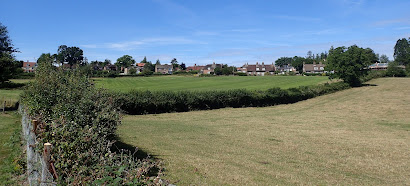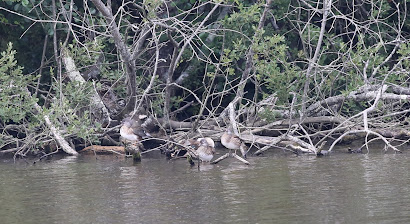Home from home!
Delana & I arrived back in England on 6th July. It had been a bit of an epic trip, but considering the circumstances a relatively good one. Social distancing was respected on the long leg from Buenos Airies to Paris, but it was a full plane from Paris to London. Jonathan was there to whisk us away to our new home away from home in the village of Balcombe in West Sussex.
Rowan, Lola & myself.
Delana, making herself at home
in the kitchen.
Jonathan & Rowan are renting a house in Balcombe & it really is a beautiful little place. Wonderful English countryside all around, a country pub across the road & a general store. Not that we could visit any of these, as we had fourteen days of quarantine to endure! We are getting used to this now! The time passed quickly as both of us were busy & in our off-time we could sit lapping up the summer sun in the garden.
The lovely rural, rustic country pub.
Our first pub visit since February!
The 20th July was our freedom day & we celebrated by visiting the pub across the road & very pleasant it was too.
Looking back towards the village from the fields.
Chinese Water/Grey Lag/Canada Goose.
We did several bird walks around Balcombe Lake & associated woodland. it is beautiful countryside around here & a real pleasure to be out & about.
Best birds:
Mandarin Duck; Great crested Grebe; Red Kite; Common Buzzard; 2 Honey Buzzard; Sparrowhawk; Kestrel; Hobby; Common Tern; Kingfisher & Grey Wagtail.
In the woodlands Great Spotted Woodpecker was common; Green Woodpecker was recorded on two occasions; Treecreeper; Marsh Tit; Blackcap; Willow Warbler.
Myself & Jonathan.
On the 24th July we had a brief visit to Ashdown Forest Visitor Centre (which was closed), but we enjoyed a walk through a bit of heath land & patches of woodland. The entire area is very scenic & we enjoyed our time there. Best birds were 4 Stonechat; Dartford Warbler & 2 Marsh Tits.
Delana & myself in the winery.
25th July we visited the Kingscote Vineyard which was an excellent morning out. The farm is in a beautiful setting & the walk around & accompanying talk was excellent, as was the wine tasting & lunch.
Jonathan, Rowan & myself.
27th July was Jonathan's birthday, so we had a little celebration at home.

















































